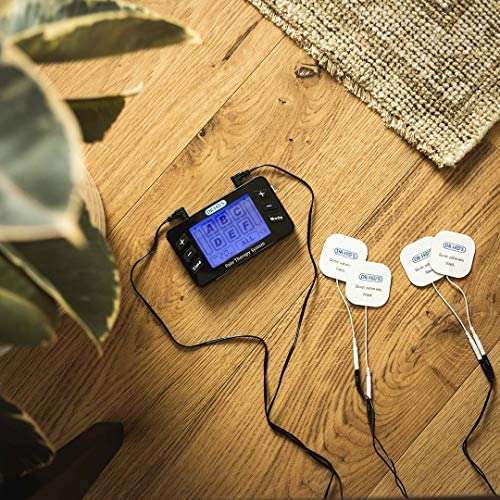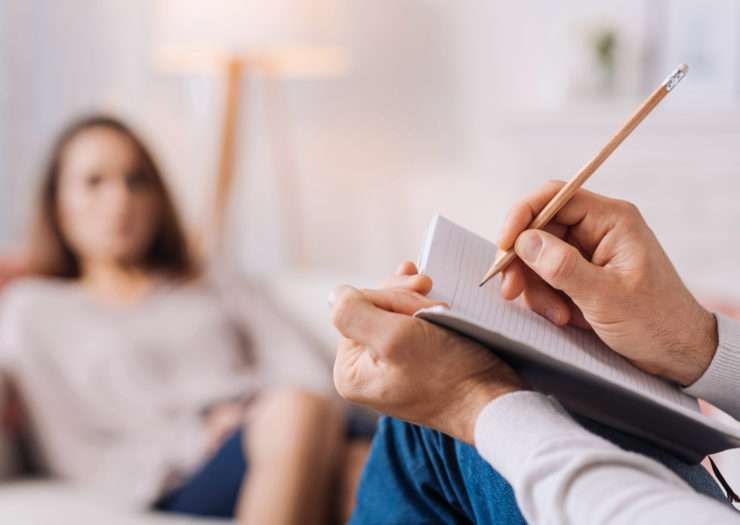Music can have a profound effect on both the emotions and the body. Faster music can make you feel more alert and concentrate better. Upbeat music can make you feel more optimistic and positive about life. A slower tempo can quiet your mind and relax your muscles, making you feel soothed while releasing the stress of the day. Music is effective for relaxation and stress management.
Research confirms these personal experiences with music. Current findings indicate that music around 60 beats per minute can cause the brain to synchronize with the beat causing alpha brainwaves (frequencies from 8 – 14 hertz or cycles per second). This alpha brainwave is what is present when we are relaxed and conscious. To induce sleep (a delta brainwave of 5 hertz), a person may need to devote at least 45 minutes, in a relaxed position, listening to calming music. Researchers at Stanford University have said that “listening to music seems to be able to change brain functioning to the same extent as medication.” They noted that music is something that almost anybody can access and makes it an easy stress reduction tool.
So what type of music reduces stress the best? A bit surprising is that Native American, Celtic, Indian stringed-instruments, drums, and flutes are very effective at relaxing the mind even when played moderately loud. Sounds of rain, thunder, and nature sounds may also be relaxing particularly when mixed with other music, such as light jazz, classical (the “largo” movement), and easy listening music. Since with music we are rarely told the beats per minute, how do you choose the relaxation music that is best for you? The answer partly rests with you: You must first like the music being played, and then it must relax you. You could start by simply exploring the music on this web page. Some may relax you, some may not. Forcing yourself to listen to relaxation music that irritates you can create tension, not reduce it. If that happens, try looking for alternatives on the internet or consult with Counseling Service staff for other musical suggestions. It is important to remember that quieting your mind does not mean you will automatically feel sleepy. It means your brain and body are relaxed, and with your new calm self, you can then function at your best in many activities.
Experiment now. Experience a “sound bath” and let the music carry you away
The links below each open relaxing musical selections in YouTube.
A Moment of Peace Meditation
Aneal & Bradfield, “Heaven and Earth Spirits” track from Life & Love). Lovely contemporary piano music with accompanying instruments and nature scenes.
Echoes of Time
C. Carlos Nakai from the Canyon Trilogy. Serene Native American flute music, with a picture of Nakai backlit by the sun at the Grand Canyon.
The Winding Path
Ken Kern from The Winding Path. Highly rated, beautiful piano music with accompanying instruments with pictures of exquisite flowers and plants.
Classical Indian Music for Healing and Relaxing
Gayatri Govindarajan, “Pure Deep Meditation” track. Lovely and rhythmic music played on the veena, the most ancient of the Indian plucked-instruments, with nature scenes.
Angels of Venice
Angels of Venice from Music for Harp, Flute and Cello. Classical with 3 instruments with nature pictures.
Earth Drum
“Spirit Vision,” (David & Steve Gordon. Serene and lovely contemporary Native American informed-drumming music utilizing Taos Log Drum and Incan Pan along with other instruments and ocean/forest nature scenes.
Buddha Spirit
Aneal & Bradfield from Light & Love. Reflective but strong contemporary music utilizing various instruments and occasional humming voices with colorful oscillating fractals
Spa Relaxing Music
Tranquil contemporary instrumental with piano and a fixed candle light.
Relaxation Music: 1-Hour Meditation Candle
Serene contemporary instrumental with piano and one flickering candle.
Sleep Deeply
Dan Gibson. Nature sounds and instrumental, tranquil sleep music.
Weightless
Marconi Union. The sounds on this video are carefully arranged harmonies, rhythms, and bass lines that help slow a listener’s heart rate, reduce blood pressure, and lower levels of the cortisol stress hormone.
Reiki therapy is provided to patients in Taussig’s treatment and exam rooms by Certified Reiki Master Therapists. There is no charge to patients for treatments performed at Taussig. Reiki therapists believe self-treatments can help patients to continue receiving the benefits of reiki on a daily basis. This document details information about Reiki self- treatments, which you can perform on yourself at home, at your own discretion. These can be adapted to meet your own needs.
This document is being provided to you as a follow-up to a recent reiki treatment you received at Taussig Cancer Institute. Reiki is a complementary therapy available to Taussig’s patients. Treatments provided by trained reiki Master Therapists and patient- administered self-treatments have been found to be beneficial in supporting cancer patients’ healing journeys by:
Reiki is used in healthcare as a complement to—never as a substitute for—patients’ regular medical treatment and medications. Reiki supports the body’s natural healing abilities. This is an important point to remember.
Reiki has its roots in ancient Chinese and Japanese medicine. Since the early 1990s, reiki therapy has been used with greater regularity in healthcare settings. Over 900 U.S. hospitals and healthcare systems use reiki as a complementary therapy. Reiki is not harmful to patients in any way, and it is safe to use reiki in conjunction with chemotherapy, radiation, and medications used in the medical treatment of cancer .
Reiki is the Japanese name for “Universal Life Force Energy,” which is the life-giving energy present in everyone. The best way to understand reiki is to view it as our “experienced sense of being alive.” Reiki therapy is a gentle touch therapy that involves the placing of the therapist’s or patient’s hands on various locations on the patient’s body to promote relaxation and a sense of calm.
Procedure Details
How do I perform a reiki self-treatment?
Try to follow the hand position instructions in the order in which they are described below. However, feel free to make any adjustments you believe will be beneficial to you. For a 20-minute self-treatment, it is suggested that you perform each hand position for 2 minutes, but don’t worry about the exact amount of time. You may feel the need to do some of the hand positions for a longer time than others. With practice, you will memorize the hand positions. Please don’t worry about doing the hand positions in a perfect way. Simply relax and do the best you can. That will be good enough. Finally, feel free to place your hands other places on your body that you feel need relaxation and healing.
Hand Positions
Hand Position 1: Begin your reiki self-treatment by gently placing your hands together in a prayer position in the middle of your chest, just below your chin. See figure 1. Keep your hands in this position for a moment or two while focusing your attention on your in- breaths and out-breaths. Once again, breathe slowly and deeply to promote relaxation of your body and mind.
Figure 1: Starting Reiki Session Hand Position (1-2 Minutes)
Hand Position 2: Gently place both hands on top of the head. See figure 2. Breathe in deep and relaxed breaths. Focus your attention on your hands on the top of your head. Allow this hand position to relax the muscles and skin on your head.
Figure 2: Hand Position 2 (2 Minutes)
Hand Position 3: Gently place both hands over your eyes. See figure 3. Again, breathe in deep and relaxed breaths. Focus your attention on your hands over your eyes. For your breathing comfort, try not to place your hands over your nose. Allow this hand position to relax the muscles and skin in your forehead, face, and eyes.
Figure 3: Hand Position 3: (2 Minutes)
Hand Position 4: Gently place your right hand over your throat and the left hand over your heart. See figure 4. Continue to breathe in deep and relaxed breaths. Focus your attention on your throat and heart. For your comfort, try not to place your hand with too much pressure over your throat. Allow this hand position to relax the muscles in your neck, throat, and upper chest area.
Figure 4: Hand Position 4 (2 Minutes)
Hand Position 5: Gently place your hands just below the breast line. The middle fingers should be touching each other. See figure 5. Continue to breathe in slow and deep breaths. Focus your attention on the area under your breasts. Allow this hand position to relax the muscles in the center of your chest and rib areas.
Figure 5: Hand Position 5 (2 Minutes)
Hand Position 6: Move your hands one hand-width down from your breast line, gently placing them over the upper stomach and in the solar plexus area. See figure 6. Continue to breathe in slow and deep breaths. Focus your attention on this area of the body. Allow this hand position to relax the muscles in this area.
Figure 6: Hand Position 6 (2 Minutes)
Hand Position 7: Gently place your hands over the stomach and navel area. See figure 7. Continue to breathe in slow and deep breaths. Focus your attention on this area of the body. Allow this hand position to relax the muscles in this area.
Figure 7: Hand Position 7 (2 Minutes)
Hand Position 8: Gently place both hands on the shoulder muscles. See figure 8. Continue to breathe in slow and deep breaths. Focus your attention on this area of the body, and allow this hand position to relax the muscles in this area.
Figure 8: Hand Position 8 (2 Minutes)
Hand Position 9: Gently place your hands above the waist line, on the kidney area. See figure 9. Continue to breathe in slow and deep breaths. Focus your attention on this area of the body, and allow this hand position to relax the muscles in this area.
Figure 9: Hand Position 9 (2 Minutes)
Hand Position 10: Gently place your hands on either the tops of your feet or the soles of your feet. See figure 10. To make this position easier, cross your left leg over your right knee to reach your left foot. Cross your right leg over your left knee to reach your right foot. Don’t strain yourself. Just do the best you can.
Figure 10: Hand Position 10 (2 Minutes)
What music should I play during my self-treatment?
You may want to play some relaxing instrumental music as you perform your self- treatments. Here are links to two free reiki music videos on YouTube.
- Reiki music sample #1: https://www.youtube.com/watch?v=JyyRylrcfF0
- Reiki music sample #2: https://www.youtube.com/watch?v=nmlmJAmgUic&t=1664s




